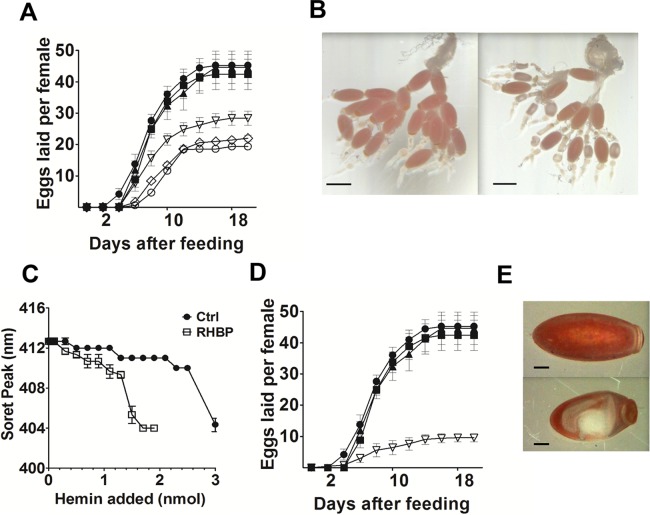Figure 3. Physiological effects in adult females fed with E. coli expressing RHBP or CAT dsRNA.
Reduction in oviposition, egg development and circulating apo-RHBP in females fed with E. coli producing RHBP dsRNA. (A) 20 day oviposition cycle. In black the three control groups (blood alone (circle), bacteria without dsRNA (square) and bacteria with ANT dsRNA (triangle)), in white the groups fed bacteria expressing RHBP dsRNA at three different concentrations 3.35 × 107 CFU/mL blood (triangle), 4.02 × 107 CFU/mL blood (rhombus) and 5.4 × 107 CFU/ml blood (circle) (n = 5). Error bars represent SEM of three biological replicates. For one of the replicates, an additional control of uninduced RHBP bacteria was used, the insects (n = 8) showed no visible reduction from the normal number of eggs, ranging between 38–50 eggs/female. (B) Effects of the RHBP dsRNA in the ovaries of adult females of R. prolixus 10 days after feeding: left panel shows a control R. prolixus ovary. Right panel shows the effect of the inhibition of RHBP by feeding blood with bacteria expressing RHBP dsRNA. Bar = 1mm. (C) Reduction of apo-RHBP present in hemolymph seven days after feeding blood alone (ctrl) or 5.4 × 107 CFU/mL blood bacteria expressing RHBP dsRNA (RHBP). Titration with hemin showed a significant reduction of the circulating apo-RHBP in knocked down insects (T-test, P = 0.0088). Bars represent SEM, three biological replicates, 1 representative female/replicate. As additional control of sample integrity, SDS-PAGE was performed to corroborate the protein profile. (D) Oviposition cycles in females fed blood alone (black circle), 5.4 × 107 CFU/mL blood bacteria without dsRNA (black square), bacteria expressing ANT dsRNA (black triangle), and bacteria expressing CAT dsRNA (white triangle), (two biological replicates, n = 6 each). (E) The dehydration phenotype was observed in 20% of the eggs laid by females fed with bacteria expressing CAT dsRNA, at 5.4 × 107 CFU/ml of blood. Bar = 0.2 mm.

